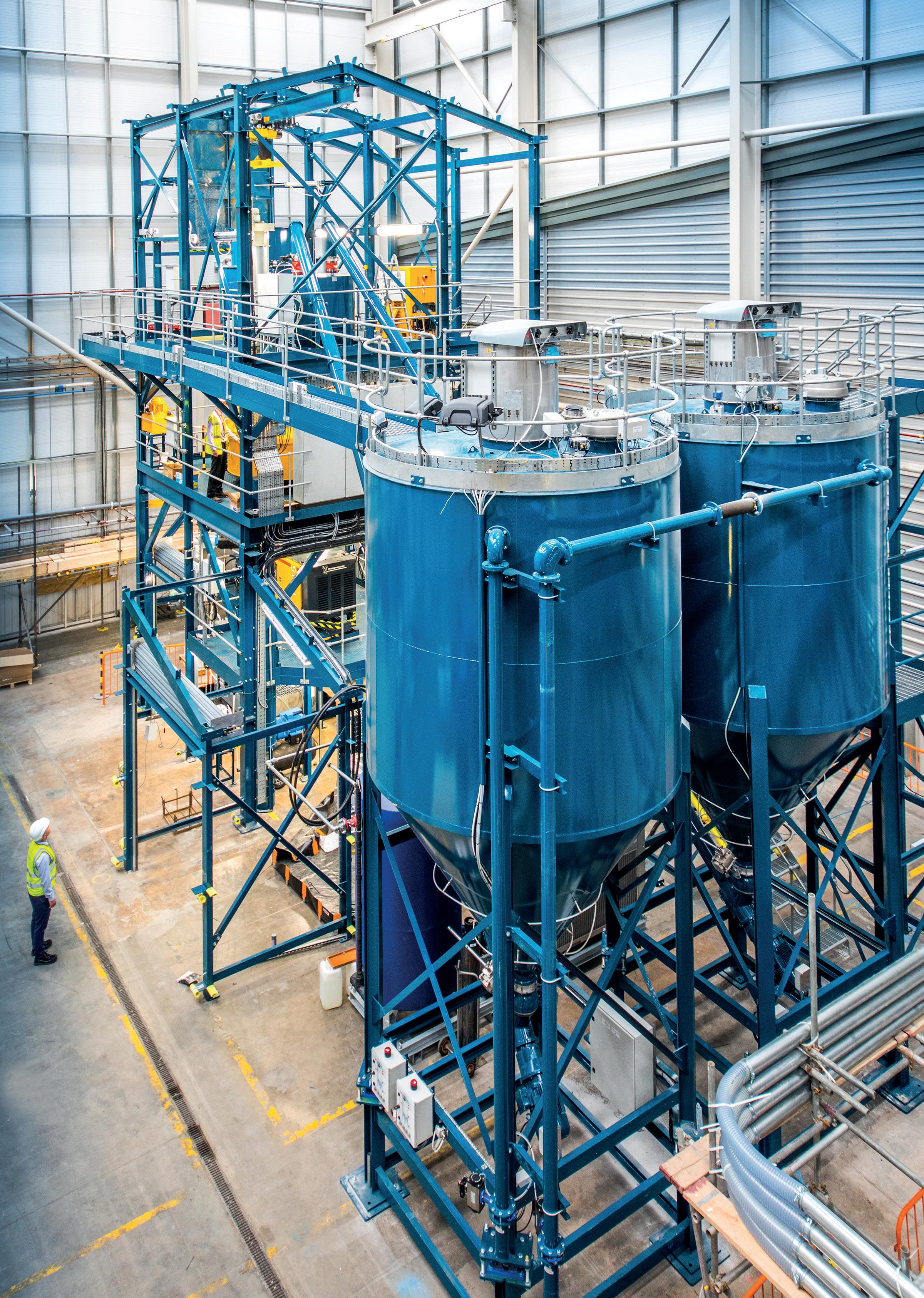PAGE 2

PAGE 20
A new age for British nuclear Industry CrossOver: Space and Nuclear
PAGE 8
Powering data centres – from atoms to bytes
PAGE 28
YGN Trip to Finland



4 December 2025 Queen Elizabeth II Centre







PAGE 2

PAGE 20
A new age for British nuclear Industry CrossOver: Space and Nuclear
PAGE 8
Powering data centres – from atoms to bytes
PAGE 28
YGN Trip to Finland



4 December 2025 Queen Elizabeth II Centre






The government’s record £17 billion investment for new nuclear in the spending review is confirmation that we are entering a new era for British nuclear energy.
Not since 1978 has Britain given backing to two new nuclear projects on the same day. Back then, it was Torness and Heysham 2—both of which are still generating vital power to the grid—and today we have Sizewell C and Rolls-Royce SMR.
These projects—long-promised and finally given the go-ahead—will kick-start a programme of new nuclear building not seen in this country for decades, helping to build the nuclear workforce of the future and revitalise Britain’s industrial might.
In a passionate address to MPs in the House of Commons championing our nuclear industry, the Energy Secretary Ed Miliband, said: “We need new nuclear to meet our climate obligations... we need it for energy security and the good, skilled jobs nuclear provides.”
The record £14.2 billion backing for Sizewell C is the biggest public investment in a nuclear project ever in the UK, confirming nuclear’s central role in the government’s growth agenda. “We understand that energy security is national security,” the Chancellor said, “it is the right choice for bills, the right choice for jobs and the right choice for growth, this government is investing in the biggest rollout of nuclear power for half a century.” Cue a very happy cohort of MPs—over 65 who have welcomed the news so far, from across the political spectrum.
It is no accident that the Prime Minister chose to be at Suffolk New College in Ipswich to welcome the Sizewell C news, surrounded by young people all eager to be involved with a project that will create 70,000 jobs across the country, 10,000 of them locally and 1,500 apprentices. The project will be a badge of pride for them, as it is in every
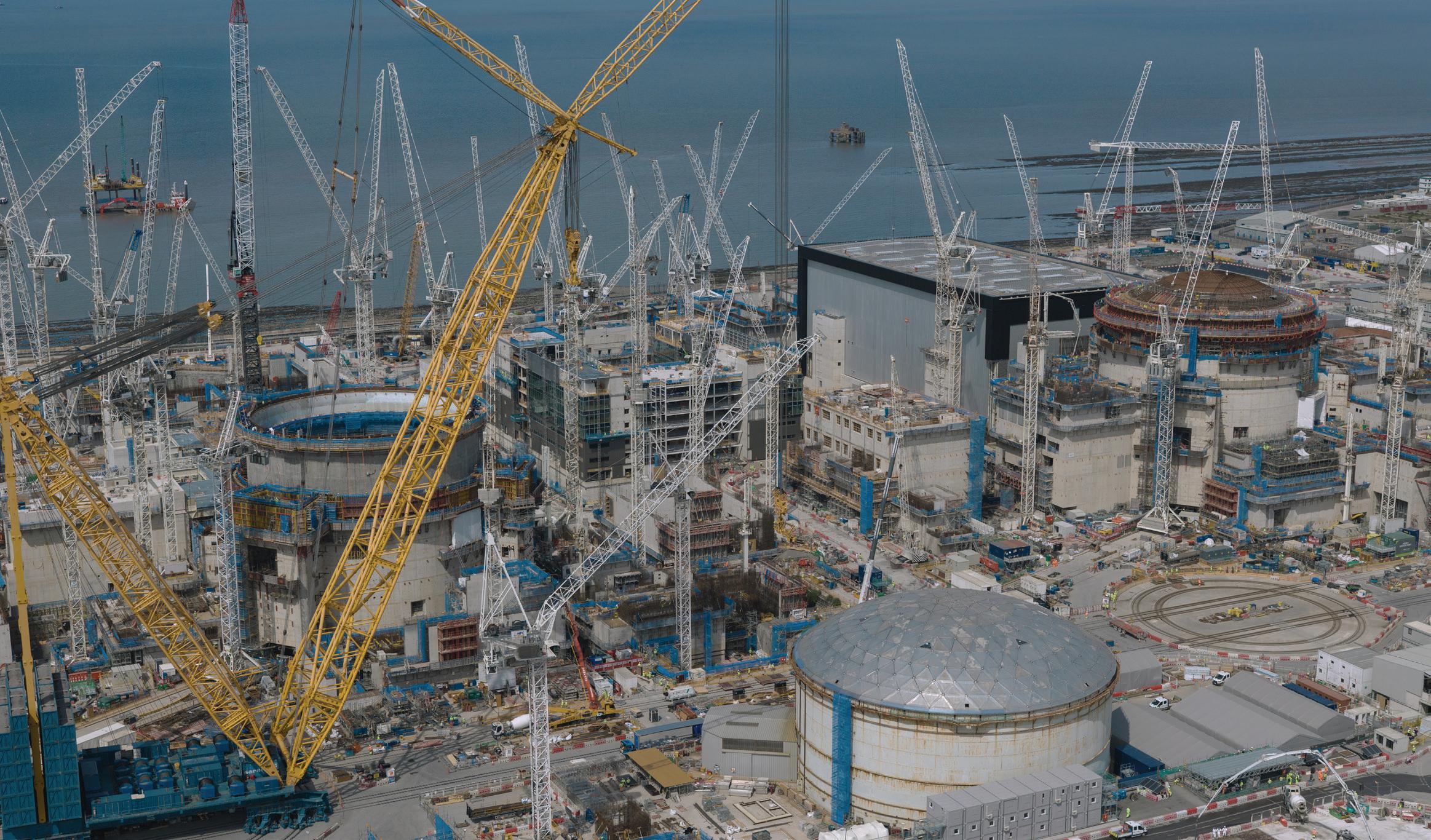
nuclear community in the country, because they know what it offers: immense opportunity, certainty and a chance to live and work where they grew up, building a good future.
A replica of Hinkley Point C, Sizewell C will carry on the good work being done on site at Somerset, with the added advantage of a skilledup workforce, familiar supply chain, a finalised design ready to go and all the learnings which have enabled major efficiency savings from activity on Unit 1 to Unit 2. We have built multiple reactors before and we can do it again, this time with a mix of large and small plants.
In Rolls-Royce SMR we have a UK technology aiming to become Europe’s first operational small modular reactor. It too will create jobs—3,000 of them—with the £2.5 billion earmarked for the project supporting three units, opening up even more opportunities for the supply chain and significant export potential. Lots of countries are looking at what we do here, especially with the growing interest in power hungry AI and data centres and the need for 24/7/365 clean power.
We at the NIA will continue to work with all SMR and AMR vendors, including those who also ran in the Great British Nuclear (or Great British Energy— Nuclear to give its new name) selection-process, and we welcome the government’s intention to provide a route for private sector-led advanced nuclear projects to be deployed.
There was even more good news, including a record £2.5 billion for R&D in fusion energy, to support the STEP programme and its world-leading fusion plant in West Burton in Nottinghamshire, with even more jobs promised for the coal to fusion project, boosting UK innovation and expertise. And alongside the world leading decommissioning expertise at Sellafield, there came the very welcome news that new nuclear capacity could come to West Cumbria
with the potential for some of the land at Moorside being freed up for new low carbon capacity.
As many of those working in and around nuclear know, much of the current commercial opportunity comes through the Nuclear Decommissioning Authority Estate where a largely UK supply chain is doing vital and integral work contributing to the decommissioning mission. Keeping sites, facilities and the waste safe and secure, and making progress on the GDF, have billions of pounds of public money committed to them during the spending review period. While it is subject to the efficiency savings that most revenue budgets across the public sector are having to find—and there will inevitably be some hard decisions to be made—it remains a very significant part of our industry even if it does not grab the headlines in the same way.
Over the past few years much of the work of the NIA, our members and those we ally with has been to make the case for, and seek confirmation of, the projects that help to make high level targets real—providing jobs, growth, secure power and weaning the country off an over-reliance on imported gas as the basis for our energy mix. While the announcements in the spending review may be the fruits of hard work by many people over a long time period, the reality is also that the impetus shifts now to industry—delivering those projects, helping build and expand the supply chain, attracting people into the sector from education or other industries, and above all demonstrating to the public that this is an industry with a golden future.
Much as we can take some fleeting satisfaction from the spending review, it is from here that much of the hard work now begins. I am confident that as a sector we are more than capable of proving that worth—but it is a challenge we must now focus on meeting together.

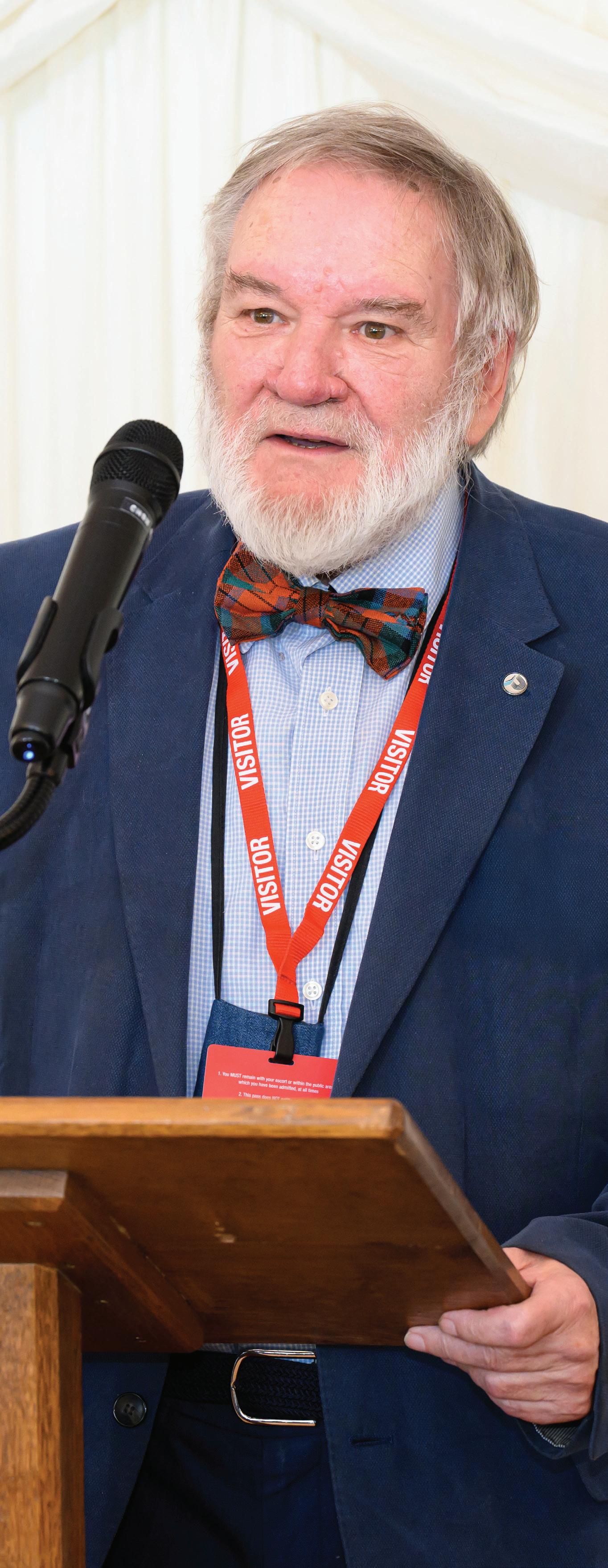
A trusted advisor to Prime Ministers and a close friend to the late Nelson Mandela, Professor John Fyfe has lived a colourful life, but it is his contribution to UK nuclear and his beloved West Cumbria, to which he dedicated 40 years of his life, which makes him one of the industry’s most important figures. The NIA’s Iolo James sat down with the man they call The Prof.
John Fyfe is one of the friendliest people you could ever wish to meet. Stood outside his house, a beaming smile across his face, waving excitedly, he greets me like an old friend. This is my first time meeting John—or The Prof as he’s affectionately known—but it feels like we have known each other for years, such is the welcome. By the end of the afternoon, it is me who is left with the broadest of smiles, in awe of a man who has helped shape so many communities at home and abroad.
To many in the nuclear industry, The Prof needs no introduction. He spent several decades driving socio-economic development in the North West and Scotland, was heavily involved in the establishment of the Nuclear Decommissioning Authority, building into it their socio-economic responsibilities, and was also the very first patron of the Nuclear Institute’s Young Generation Network, which he describes as one the “proudest moments in my life.”
He is best known, though, for his four-decades long regeneration work in West Cumbria, which he started in the mid-1980s and which would earn him a CBE. John was instrumental in setting up what was at the time a radical model of community partnership, which is now the standard practice of ensuring all stakeholders, including government, businesses and local authorities, are working as one for the greater good of the community.
It’s a model with its roots in the communities where the young Prof grew up, with his early years in Dunfermline heavily shaped by the coal industry, and which would shape his politics too. By the age of 26, he was a trade union leader, with stints in several mining communities, including Aberfan.
“The South Wales pits had a big impact on me, especially when they were closing,” he says. “I could see my childhood rearing its head again. But what do you do when the pits close? Nobody was thinking about when you closed this pit or that pit, what happens to the community?”
The British Coal Enterprise (BCE) was hastily set up to assist in the economic regeneration of coalfield areas, with John on the board, but it was too little, too late to help the pits, so with a fire in his belly and a renewed sense of purpose, he went about trying to fix things.
He recalls a conversation with the Deputy Prime Minister, Willie Whitelaw and Sir Bernard Ingham, Margaret Thatcher’s Press Secretary, at which Whitelaw said, “Haig Colliery, the last coal mine in Cumbria, is going to close. Have you tried out any of these mad ideas of yours on partnerships and community regeneration?’ I said yes, so he asks me to go have a look up there. That was 40

years ago this September. And the big conclusion I came to then was that the nuclear industry had an opportunity to do what coal never did. It had time, time to do regeneration properly.”
From then on, John vowed to do all he could to promote greater harmony between those in power and the communities they governed. He sees industry as a force for good, sustaining jobs and livelihoods, but stresses a long-term vision is needed to give these communities certainty and hope.
“Energy policy is at the heart of economic development,” he tells me, “Successive governments haven’t done enough of a long-term view.” It’s a statement as true today as it was sixty years ago, and it goes to the heart of the Prof’s thinking.
John’s plan for West Cumbria, centred around the area’s strong nuclear links, consisted of five key actions: Set up a science park, establish a university, attract funding, especially from Brussels, regenerate areas like Whitehaven and Workington, and establish a West Cumbrian development agency which would re-skill workers leaving the sector, including helping them to set up businesses. It was UK’s first fully fledged community partnership.
“There were problems in the community, something had to be done which hadn’t been done before” he told Whitehaven News in 2010. “Instead of giving a bit of money to a running track here, a bit to the rugby league club there, was there not a better way to harness the BNFL input for the benefit of the whole community? I came up with a suggested solution which was a partnership approach.
“It’s very important we diversify through research and development along with other aspects of energy and environment. Nuclear newbuild has to be a catalyst. We have a wonderful opportunity to get that ship moving so quickly—it will transform this community over the next five years. The opportunities are there and we must not look a gift horse in the mouth.”
It led to the creation of the Westlakes Science and Technology Park, which now houses the University of Central Lancashire’s Westlakes Campus. Last year, the main building was renamed the John Fyfe building, a fitting tribute. Whilst he is grateful for the accolades, what he is most proud of is the shift he saw in people locally.
“Getting people to believe in themselves, irrespective of politics has been one of the big challenges in my life,” he says, and I can see that he really means it.
It’s a mantra John has taken all over the world, including in his work in helping to drive developing countries towards self-sufficiency. He was responsible for parts of the Government’s Aid Programme which supported the Commonwealth countries, shaping new and radical aid policies focussed on tackling inequalities. Such was his influence that he found himself taking on the training of new leaders to have a greater responsibility for their socio-economic policies, including Nelson Mandela.
“My wife Liz never saw me! Six months every year I’d be in the South Pacific or in Africa, in Tanzania or Zambia, or in jail with Mandela in South Africa.” John used textbooks from the Open University—an institution he helped set up as a trade unionist in the 1960s—to teach Mandela on Robben Island and the two formed a very special bond. Go to Robben Island today and you will still be able to see the material John took out of the prison library.
John was given three students to train by Mandela, among them Cyril Ramaphosa, now the President of South Africa. “His background was coal—he was a trade union leader, and he still very often calls me on a Sunday to catch up” he tells me. He points to a framed picture of him and Liz with Ramaphosa which was taken when the leader came to the UK on state visit, but he made sure he arrived a day early, so he could take the pair out for lunch.
In 2010, he said: “After [Mandela] was eventually released from Robben Island I would still see him (in one or two more comfortable prisons) to talk and tell him about the work I was continuing for the ANC outside South Africa, including London where I helped Labour ladies like Barbara Castle and Judith Hart with the peaceful rallies and the lighting candles. I also made the soup and handed out the teas, but again it was preaching partnership. It worked in South Africa.”
From Cumbria to Cape Town, John has spent his life helping people and communities in need of support and guidance and has taken his learnings and socio-economic policy thinking all over the world. He has imparted his wisdom on students at several universities including Harvard, Manchester, Amsterdam and Oxford, where he first met a young Tony Blair, with the pair striking up a close friendship that is still going strong today.
It is easy to see why John is so admired among his peers—he has a trusting demeanour, a warm heart and an inquisitive nature. It is a joy to be in his company. For the Prof, his friendships are sacred and have allowed him to accomplish a great deal throughout his life.
“You can achieve things with other people if you work with people who have similar values and similar thoughts,” he says, “but never think you can do it on your own because if it’s something big then you need support, whether it’s in a marriage, or developing a science park, peace in South Africa or to get tribes to work together in the South Pacific. No individual can do that. It needs to be a team effort.”
I could have stayed and chatted to John for many more hours, and when the time comes to leave he tells me that his door is always open for a chat or a cuppa, and I encourage anyone who has ever crossed paths with him, to take him up on that offer.
Now in his 80s, the Prof spends his days enjoying the nature that surrounds his home, which he does in between collating his life’s work on partnerships for socio-economic development, in the hope his experiences could be used by current or future generations. “That,” he says, “is what keeps me going.”
Plans for the deployment of four ACR-300 small modular reactors and restarting uranium mining and enrichment were among the priorities outlined as Argentina’s National Atomic Energy Commission celebrated its 75th anniversary. Argentina currently has three nuclear power units. Between them they generate about 5% of the country’s electricity. There had been plans for a fourth unit, but it appears that has been superceded by the SMR plans.
First safety-related concrete has been poured for the reactor building of unit 3 at the Shin Hanul nuclear power plant in South Korea. The APR1400 unit is scheduled to be completed in 2032. Preparatory groundwork began for the construction of the two APR1400s following the approval by the South Korean government of the project’s implementation plan in June 2023. South Korea has four operational APR1400 units with two more under construction. Four APR1400 units have also been built at the Barakah nuclear power plant in the UAE, which are all now in commercial operation.
Newcleo and Slovak radioactive waste management company JAVYS signed a joint venture agreement, paving the way toward the construction of Newcleo lead-cooled fast reactors at the decommissioned Bohunice nuclear power plant in Slovakia.
The newly established joint venture will focus on developing a project to build up to four of its lead-cooled fast reactors (LFR- AS-200) with a total output of 800 MWe on the site. The units are to be powered with mixed uranium/plutonium oxide (MOX) fuel fabricated from existing Slovakian used nuclear fuel.
The aim is to reprocess the used fuel in France and assemble new fuel rods at Newcleo’s planned French MOX facility which would then be used to power the LFR-AS-200 units creating a closed nuclear fuel cycle.
In parallel, Newcleo and JAVYS will continue cooperating with the French government and nuclear fuel supply chain to develop and deploy used fuel transportation and reprocessing solutions, as well as continuing to advance Newcleo’s fuel manufacturing facility in France.
According to Newcleo’s delivery roadmap, the first non-nuclear precursor prototype of its LFR-AS-200
is expected to be ready by 2026 in Italy, the first reactor operational in France by the end of 2031, while the final investment decision for the first commercial power plant is expected around 2029.
Tech giants and other major energy users have signed a pledge supporting the goal of at least tripling global nuclear capacity by 2050.
Over the past year there have been a growing number of companies which use large amounts of energy who have announced plans to invest in nuclear energy as a way to meet their requirements while also cutting their carbon emissions.
The growing energy demands of AI and data centres has led to large numbers of SMR, and some largescale new nuclear units, being planned or discussed, as well as growing recognition from other industries that they can use nuclear-generated energy and heat to decarbonise their industrial processes.
Nuclear energy currently accounts for 9% of the world’s electricity from 439 operable nuclear power reactors. Global energy demand is projected to grow at about 4% per year, according to the International Energy Agency.
Advanced
Personnel
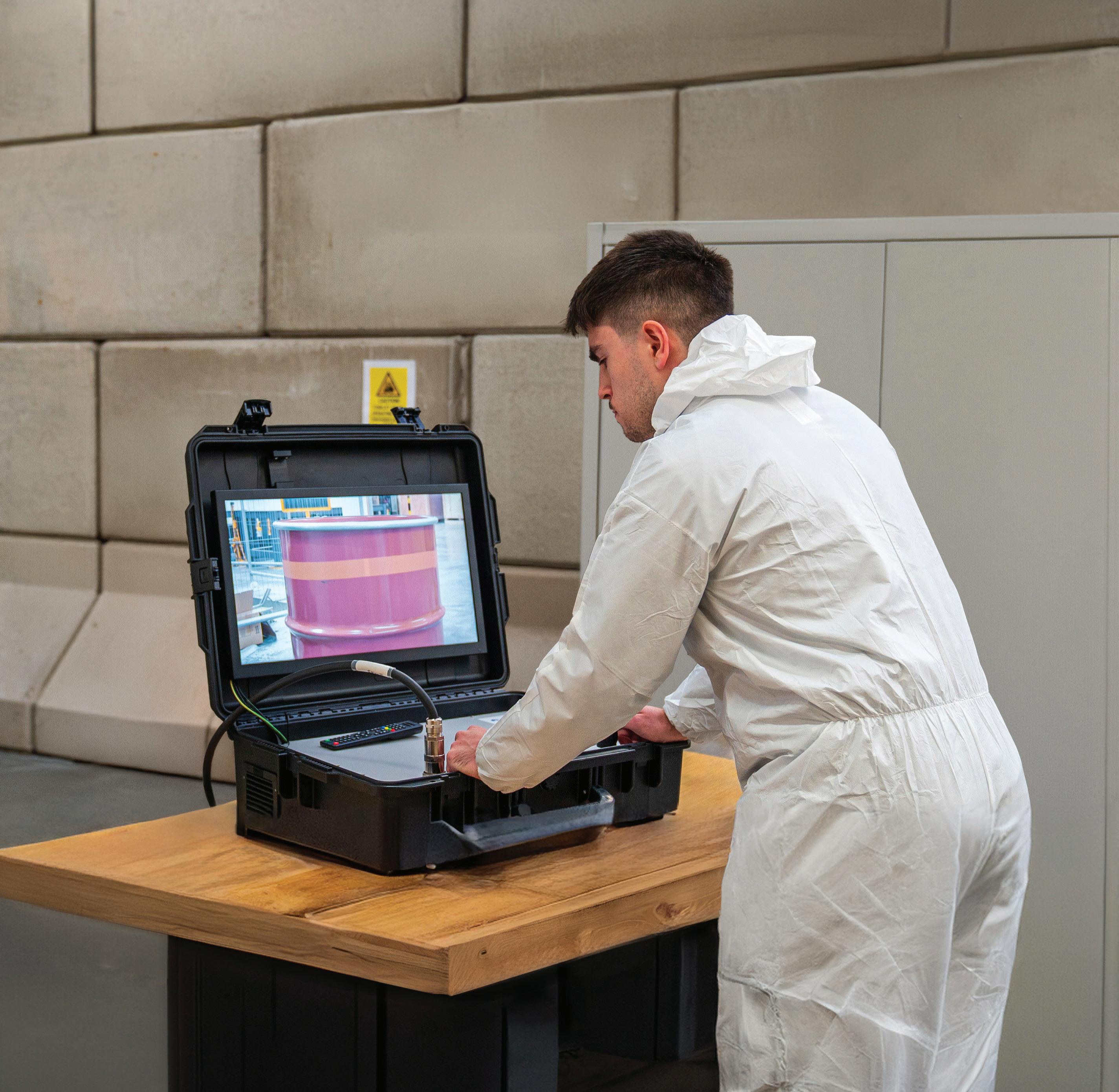


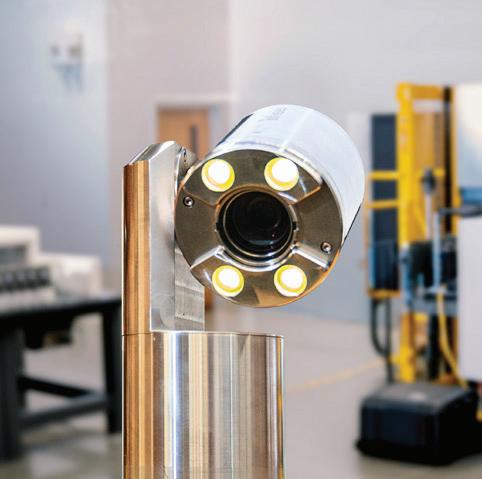








In the US, annual investment in data centre construction has doubled in the past two years alone. We have also seen recent advances in generative AI, with ChatGPT searches thought to consume around six to 10 times the amount of power as a traditional Google search. As a result, there has been a heightened focus on the potential future power demands of data centres. Goldman Sachs, for example, has estimated that in 2030, data centres will make up 8% of power demand in the US.
Many similar forecasts have focussed on US and European data centre power demands. These figures potentially underestimate the future global power requirements of data centres, particularly due to a lack of certainty or visibility on power demands in certain regions such as China. In addition, forecasts will vary globally, with some areas seeing a much higher proportion of power demand from data centres. For example, the International Energy Agency (IEA) estimates that almost one-third of electricity demand in Ireland could come from data centres by 2026.
All this is to say that, even by conservative estimates, the future demand for power from data centres is likely to be huge. When we combine this with the increased demand from the broader electrification of industry and society, questions are being raised as to how data centres will meet their future power needs, whilst also meeting the pressure to decarbonise their footprint to meet net zero targets.
Over recent years, hyperscalers have partnered with power generators and suppliers to secure power from renewable sources. Power purchase agreements (PPAs) have been the leading strategy for hyperscalers to fulfil their renewable energy commitments with Amazon, for example, acquiring more PPAs globally than any other company in the last year.
While renewables have the potential to meet a significant proportion of the increased power needs from data centres (particularly when combined
with storage), their intermittent nature means that they cannot produce power consistently enough to be the only energy source for data centres, which have a 24/7 demand. Baseload power generation is therefore essential. Whilst gas fired plants with carbon capture could provide a low carbon baseload solution, the geographic constraints of carbon storage means that carbon capture gas plants are unlikely to be the answer for data centres globally.
Nuclear is therefore attracting greater attention as a potential solution for the new power demands from AI and data centres.
Nuclear power offers significant benefits which are ideal for data centres:
● They can run baseload, providing a reliable source of power, 24/7 – this is essential for data centres, which have round-the-clock power needs;
● They are incredibly energy dense compared to other power sources – this is due to the capacity factor of nuclear power plants. As an example, a 1GW nuclear reactor would need to be replaced by three to four renewable plants (each of 1GW size) to generate the same amount of electricity onto the grid. The energy density of nuclear therefore makes it ideal for meeting the huge power needs of data centres; and
● They are low carbon – whilst nuclear does create nuclear waste which requires careful storage management, nuclear energy has almost zero carbon dioxide emissions, meaning nuclear power can satisfy the pressures faced by data centres to find low carbon sources of power.
Nuclear power, however, is not short of challenges. High capital costs for large scale nuclear power projects, with recent projects beset by cost overruns and delays, has meant that nuclear has traditionally faced difficulties in obtaining financing for construction. Uncertainty as to political and regulatory support for nuclear, as well as public perception issues, has meant that nuclear power projects may not be seen as the
obvious solution for data centre power needs, despite the benefits it offers.
The landscape is, however, shifting. The urgency of achieving net zero goals is pushing nuclear energy to the fore. Recent geopolitical shifts have renewed the focus on energy security, with countries such as Germany, who have been opposed to nuclear as part of their energy mix, now reconsidering their appetite. We are also seeing greater political and regulatory support for nuclear projects, such as the 2024 European Market Reform (which would allow contracts for difference to be used to support nuclear projects in the EU) and the Regulated Asset Base approach, which has been developed for projects like Sizewell C in the UK.
Investors and finance providers globally are also now showing a greater interest in funding nuclear projects. Last year, for example, 14 of the world’s biggest banks and financial institutions pledged to support the COP28 goal to triple global nuclear capacity by 2050.
Technology companies therefore have an opportunity to capitalise on the increasing political and regulatory support for nuclear, as well as the increasing willingness for investors to fund nuclear power projects.
Data centres are now looking at using nuclear power in several different ways:
● Co-locating data centres with existing operational nuclear power stations: last year, Amazon acquired a data centre site which is connected to a nuclear power station in Pennsylvania, US. As Amazon develops the data centre, the nuclear power plant will supply carbon-free power through a PPA with Amazon.
● Re-starting operations of existing plant: last year, Microsoft signed a 20-year PPA with Constellation Energy, which will pave the way for a restart of the Three Mile Island Unit 1, which previously operated between 1974 to 2019.
● Developing new nuclear reactors: a number of technology companies are investing in the development of new nuclear technology. For example, Amazon and X-Energy last year announced a collaboration to deploy 5GWs of small modular reactors (SMRs); Google and Kairos Power announced a collaboration to deploy 500MW of SMRs; and Microsoft has said that it intends to integrate advanced nuclear technology into powering its data centres, announcing a search for a Principal Program Manager of Nuclear Technology, who would be responsible for implementing a global SMR and microreactor energy strategy.
Advanced nuclear technology, such as SMRs, are at an earlier stage of maturity compared with large-scale nuclear technology (no SMRs are operational outside China and Russia). Therefore, while SMRs may not provide an immediate solution for new near-term planned data centres, the anticipated AI boom is fuelling investor interest and allowing SMR developers to raise significant amounts of new capital to fund their development pathways. Governments are also looking to support SMR development as they look for additional ways to meet future energy demands (as well as boosting domestic jobs and supply chains and fostering the AI/tech industry).
The UK, for example, is currently running a competition to procure SMR technology for the development of new nuclear projects, as part of its ambition for up to a quarter of all UK electricity to come from nuclear power by 2050.
The UK government also recently announced its intention to relax planning laws to allow developers more flexibility on where they can locate nuclear sites, with the aim of facilitating co-location with energy intensive industrial sites such as AI data centres.
SMRs have the potential to provide further benefits for data centres:
● While SMRs currently have a high levelised cost of energy, Wood Mackenzie has estimated that, if SMR costs fall to about U$120/MWh by 2030, they could be competitive with gigawatt-scale nuclear, as well as with gas and coal plants.
● The smaller size and overall cost of SMRs, means financing should be easier to obtain than has historically been the case for large-scale nuclear, owing to the lower overall quantum of financing needed and the shorter construction periods.
● The modular nature of SMRs means that parts can be factory-made and shipped to a variety of site locations e.g. data centre sites.
● SMRs are also flexible, as they can be scaled up or down to meet energy demands – this can make SMRs ideal for increasing power supply as data centre sites are expanded.
The involvement of technology companies in the nuclear space means that traditional methods of financing nuclear projects may also be disrupted. Technology companies may instead choose to provide debt or equity financing to nuclear developers at a corporate level, to facilitate the development of new reactors (such as Amazon’s collaboration with X-Energy).
Alternatively, a modified “Mankala” model, could play a significant role in developing nuclear technology.
The Mankala model has been used for the financing of nuclear power plants in Finland, bringing together consortia of corporations to purchase, finance, and share the output of jointly owned energy-generation facilities. A similar approach could be taken with technology companies investing in the development of new nuclear reactors while being entitled to a proportionate share of the power through PPAs. This allows capital to be pooled from a variety of sources with the nuclear project receiving contracted revenues under PPAs from creditworthy offtakers.
The potential for nuclear to provide a viable solution for powering data centres is clear, with investments from technology companies in nuclear projects and developers increasing rapidly over the last year alone. We are likely to see further developments over the coming years, with technology companies challenging some of the traditional ways of developing and financing nuclear projects.
Linklaters has advised on nuclear projects at every stage of development; including joint ventures, equity investments, financing, development of regulation, consenting and licensing processes, procurement of the technology, construction, operation and fuel supply, and reprocessing waste and decommissioning. Visit our Nuclear: A Net Zero System webpage for more details. Please also visit our Digital infrastructure webpage to explore our wider data centre capabilities.

such power”
30 years on, Brian George remembers the making of Sizewell B
Sizewell B stands at the pinnacle of British nuclear. Despite the longest and most expensive public inquiry in British history, major changes to the civil design midway through (“the densest rebar the contractor had ever known”), and the dissolution of the original owner, Sizewell B was a triumph. From first concrete to first power, it took 6 years, 7 months, the fastest of any British reactor relative to its size. It has the highest load factor of any reactor in our history, and it will have the longest life by far.
I spoke with the man who led the project from the beginning, Brian George. From the start, he is adamant that his background as an engineer with practical experience designing and making things, and as a man on the shop floor used to dealing with everybody, was key to the project’s success.
A star pupil as a young boy in England, George immigrated with his family to Queensland, Australia when his father accepted an engineering job there. Upon finishing school at 16, George notes that “I only ever applied for one job in my life”, as a welder and a coppersmith. He recalls wryly how in 1952, “the relationship between the English and the Australians was very bad. The first I learned was that if you get into fight, making up your mind if you are going win or lose. Whichever it is, do it quickly, because no one wins from a long fight.” He learned to weld as well as to fight, such that after just one year he was asked to join the drawing room as a designer. They sent him down to the shop floor once more to sort out an Australian apprentice who wasn’t performing. George got him up to scratch and reflects on the lesson: “you have to manage the people. Without that you won’t succeed.”
The budding designer returned to England at 18, because his mother couldn’t stand Australia. There, he found himself in high demand in the quarter century that followed. Napier’s took him on as an apprentice toolmaker, eventually sending him to do the Higher National Certificate in engineering, which became a First Class Honours university degree. He rose to become the leader of the drawing office at the Nuclear Design and Construction consortium of Babcock, English Electric, and Taylor Woodrow. There, he was involved in commissioning Wylfa A, then the
largest nuclear power station in the world, and deeply involved in designing the AGRs at Hartlepool and Heysham.
As George puts it, “And then they started building. And it was awful really. Everything wrong with project management was there. There was no authority for the project manager to do what was necessary.”
George took that lesson to heart when the Central Electricity Generating Board, long a suitor, finally poached him to lead their PWR programme in 1978. Sizewell B was to be the first of ten.
Up until that point, the CEGB had appointed independent consortia to do the design and build of the stations, which were then turned over to the CEGB for commissioning and operations. However, this time, scarred by consortia failures on the AGR projects, the CEGB would take more direct responsibility for project management of design and construction. The man in charge would be Brian George.
He points out that he knew the people at the consolidated National Nuclear Consortium (NNC) very well, so he picked the people he wanted from the NNC and left the people he didn’t. With a team of 120 from the NNC and 40 or 50 from the CEGB, he set about fixing the design he got from the Americans. He recalls that “the American design was not too good from a construction point of view. It was too tight.” He points out that since he was a welder from the age of 16, he knew that “to do a Class 1 weld, you need space around it. You can sit there. Both NNC and Westinghouse were getting that wrong.” He increased the diameter of the containment vessel by 10 feet, so that workers would both have space for construction and be able to get into radioactive areas for maintenance without having to lean directly against active components.
In that vein, he commissioned a 1 inch: 1 foot model of all the rooms in the station with wiring and pipework construction in it. He recalls it cost £7 million to produce that model (£21 million today), but it was “worth every penny, because all the contractors could look at it and agree on the access and timing they needed for each space.”
Even the best-laid plans, however, faced significant disruption. George notes that “once we got the go-ahead and got the design all sorted, and we



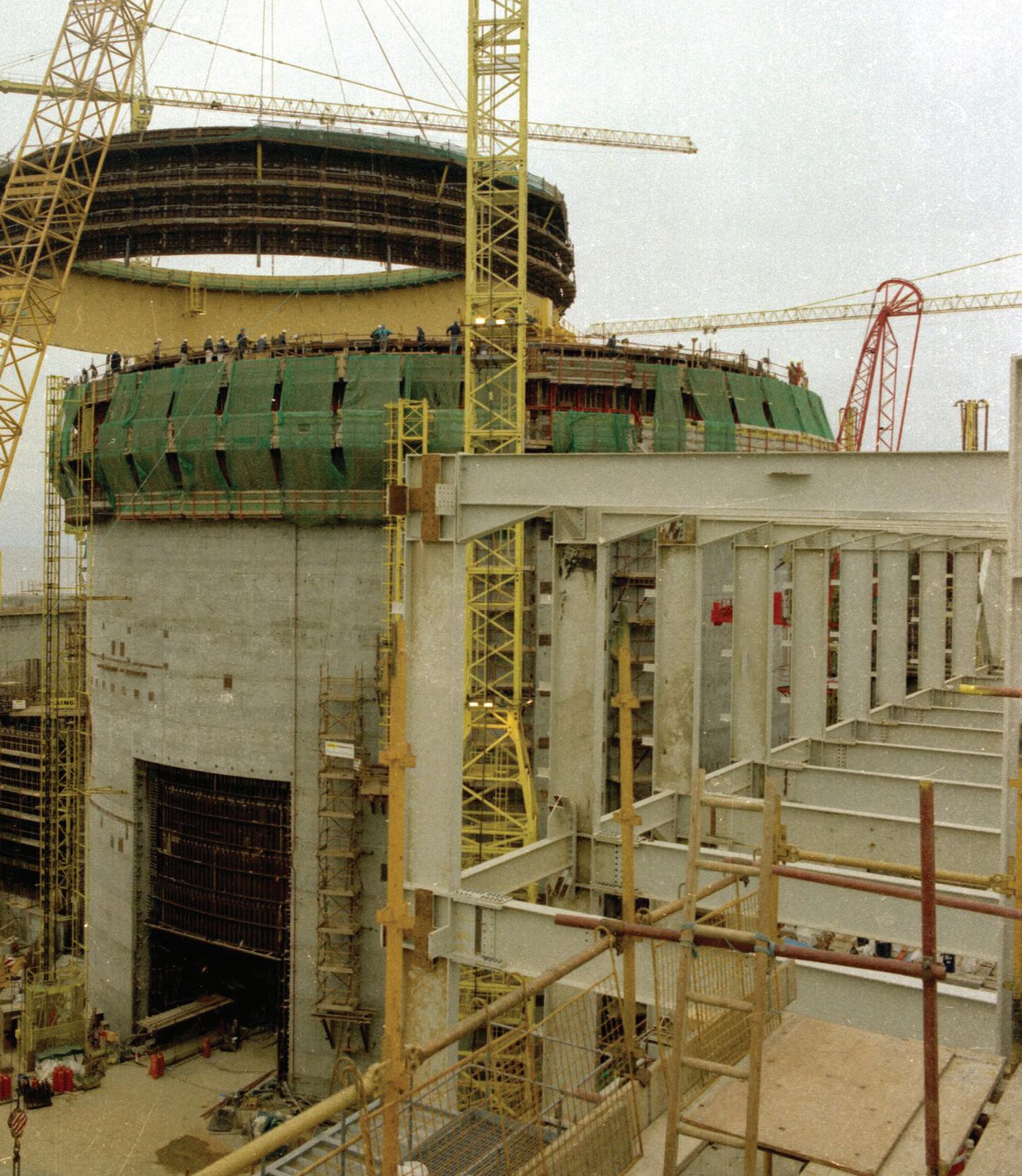


based the civil contracts on that”, the then-Nuclear Installations Inspectorate then insisted that the reactor had to resist a simultaneous earthquake and primary circuit break. He adds drily, “even though none of us could figure out how that would happen.” That changes used up a big chunk of the time contingency on the site and meant he had to shift the civil works contracts from fixed prices to cost reimbursable with agreed margins and incentives for performance. I ask George if he thought of contesting the regulators’ judgement. He recalls his early lesson from Australia: “you could not afford to get into a long argument and lose it.”
Nonetheless, George vividly declares that “there had never been a project where the project director was given such power.” When his C&I provider was unwilling to supply him before another client, he sacked them, got on Concorde, and flew to the USA to see Westinghouse to get an alternative proposal. He offered them a £10 million bonus, £100,000 for each of 100 key dates, but £0 if they were 8 weeks late, “no argument, no discussion.” He took a onepage contract back with him (“I know you buggers. You’ll take at least 6 months to get the detailed contract sorted. The one page will take precedence in English law.”)
The 100 major installations on the site were delivered on time.
George fondly remembers that Sizewell B had a culture of its own, driven by “an absolute insistence on honest reporting. If there was a problem, it had to be reported straightaway and honestly, so we could get round the table and see how we could alleviate the consequences.” He notes that it took time because “people tried to hide when they were getting things wrong”, but honest reporting “made them feel that they were an important part of the development.”
That they most certainly were, and George rightly takes pride in the station his team built. He puts the public inquiry led by Sir Frank Layfield into Sizewell B in the dock for making three assumptions about this new PWR:
● It would only achieve a load factor of 64%.
● It would take 94 months’ from the construction permit to fuel load.
● It would only operate for 25 years.
The station took 84 months from permit to fuel load, and today, after 30 years’ of life (with 30 more beckoning), its load factor sits at 84%. The project had a budget of £1.6 billion, with a £400 million contingency that absorbed the public inquiry’s demands for changes to the construction design, and it stayed on that budget.
But what about the future of the sector? George himself does worry about the younger generation of engineers. He observes that modern advances have vastly expanded our technical capability, it has come at the expense of the personal relationships. He remembers that on Sizewell B, “every week you were on site, you could talk to everybody. You got to find engineers who can do all of those things. Now kids have their faces in their phones. They don’t have that capability anymore.”
The most empowered project director in British nuclear history ends with a renewed plea to remember the human element: “if you are going to hand over that kind of power, you have to hand it to the right people!”



























Lucideon is a global leader in developing novel formulations, optimising sintering processes, and delivering precise material analysis to meet the extreme demands of the nuclear sector, from high temperatures to aggressive corrosion.
Home to the world’s largest and most advanced high-temperature water corrosion testing facility, we set the gold standard in Stress Corrosion Cracking (SCC) testing, backed by over a century of expertise.
Our innovative technologies, including Flash Sintering and ceramic matrix composites, ensure materials perform where it matters most.
Partner with Lucideon - where innovation meets scalability.
Get in touch today to future-proof your materials.

www.lucideon.com/nuclear
query@lucideon.com
www.linkedin.com/company/lucideon


“DEFUELING THE STATION ON TIME AND ON BUDGET HAS BEEN DOWN TO THE HARD WORK AND COMMITMENT OF EVERYONE INVOLVED AND WE ARE PROUD TO HAVE BEEN ABLE TO DELIVER SUCH AN EXCEPTIONAL PERFORMANCE.
“WE ARE NOW FULLY FOCUSSED ON GETTING THE STATION READY TO TRANSFER FROM EDF TO NRS FOR DECOMMISSIONING IN AROUND A YEAR’S TIME. DECONSTRUCTION OF THE SITE WILL TAKE PLACE OVER THE COMING YEARS, WITH MOST OF THE PEOPLE WORKING HERE TODAY STAYING AT THE SITE TO CARRY OUT THAT JOB.”
Andy Dalling, Hunterston B Station Director

Hunterston B power station in North Ayrshire has been defueled on time and on budget. It took less than three years to deliver this key milestone.
● Hunterston B power station has been defueled on time and on budget, the first of the UK’s seven Advanced Gascooled Reactor (AGR) stations to be declared free of all spent nuclear fuel
● Since 1976 Hunterston B has contributed more than £13.3 billion to the UK economy, and delivered nearly 300TWh of electricity, enough to power all Scotland’s homes for over 30 years. It also saved 172 million tonnes of CO2 entering the atmosphere compared to gas fired power
● The cost of defueling the power station was covered by the funds from the Nuclear Liabilities Fund (NLF), a specific fund set up in 1996 to pay for decommissioning
● Focus now turns to preparing the station for transfer from EDF to Nuclear Restoration Services (NRS) to continue decommissioning
It has been confirmed that the station, which helped to power Scotland with low carbon electricity for 46 years, no longer holds any spent nuclear fuel on the site. It is the first station in the UK’s fleet of seven Advanced Gas-cooled Reactor (AGR) sites to be completely defueled.
Formal confirmation came following a series of rigorous checks of the power station by the operator, EDF, and the independent regulator, the Office for Nuclear Regulation (ONR).
It took just two years and 10 months to remove all the fuel from the site and the work was delivered to budget using funds from the Nuclear Liabilities Fund (NLF), a ring-fenced £20.6 billion fund set up in 1996 specifically to pay for the decommissioning of the current nuclear fleet.
In June 2021, EDF signed a contract with the UK Government to defuel all seven AGR stations across the UK before their transfer to NRS. Hinkley Point B in Somerset is expected to complete defueling by the end of 2025.
Over the past three years 4,880 elements of spent fuel have been removed, processed and packaged into almost 350 large, specially engineered, flasks. The fuel was transported by rail by Nuclear Transport Services (NTS) from Hunterston B to Sellafield, in Cumbria, for long-term storage.

The UK nuclear sector is primed to deliver lasting value. But without trust, even the best engineering will fall short. Strategic, long-term, and inclusive communication is no longer just the job of a communications department, it’s a boardroom priority. If we can align our voices as well as our technologies, we can unlock nuclear’s full potential – not just to power homes, but to power public confidence in the future.
During our three decades working with critical industries, one thing is clear: in nuclear, trust is not a bonus, it’s a baseline. It is the decisive factor in whether projects progress or stall, whether communities engage or resist, and whether investors stay the course or walk away.
Despite nuclear’s role in achieving net zero, strengthening energy security, and boosting regional economies, public trust remains inconsistent. Perceptions are improving according to the latest YouGov poll1 in April, but ambivalence and resistance still pose significant barriers. The challenge now isn’t just to deliver the technology, it’s to earn the social licence that enables delivery at scale.
Trust is a strategic priority, not a communications tactic
Too often, trust is treated as an outcome, something to be won after plans are finalised and construction begins. But trust must be built early. It starts long before public consultations or planning applications.
It’s forged through how organisations listen, involve, and align – not just in what they say, but how they behave.
This holds true across the sector, from large-scale fission projects and emerging SMR developments to fusion research development and concept testing, along with the siting of the new geological disposal facility.
All depend on public confidence and alignment across a wide range of stakeholders. Without that, even the most technically sound project won’t succeed.
Earning trust means going beyond polished brochures and rigid PR strategies. It demands early, honest, and ongoing engagement with the people whose lives and landscapes will be most directly affected. And crucially, it requires consistency across messaging, across institutions, and over time.
1 24% of people supported nuclear as the best option for our future energy needs. Source: YouGov Poll April 2025.

Scepticism toward nuclear is not new. But its persistence, even amid soaring energy costs, climate urgency, and geopolitical instability shows that longstanding concerns haven’t been meaningfully addressed.
Five core issues fuel mistrust:
Lack of clear, accessible information about how nuclear works and its benefits.
Engagement processes that feel too technical, too complex, or too late to influence.
A legacy of perceived secrecy and inconsistent messaging from authorities.
Deep-seated fears around safety, waste, terrorism, and environmental harm.
A belief that national agendas override local voices, especially in historically overlooked communities.
Even when people are open to discussion, they’re often met with under-resourced engagement channels, unclear messaging, and few genuine opportunities to shape outcomes. This is not just a missed opportunity, it’s a strategic risk.
Done well, communication becomes an enabler of progress. It’s not about spin, it’s about connection, clarity, and trust. That means putting people, not just projects, at the heart of the conversation.
Over the past 30 years, we’ve supported critical nuclear programmes through a communications lens. And the lesson is consistent: trust is built when people feel seen, heard, and respected.
In our view, effective nuclear communication must:
Begin at concept stage, not post-decision. Be consistent across timelines, platforms, and partners.
Translate technical information without oversimplifying risk.
Encourage two-way dialogue, listening as much as informing.
Address difficult topics head-on, especially waste and safety and the environment.
Use trusted messengers such as local leaders or independent experts.
Tailor tone, language, and format to different communities.
Sustain momentum, even during political shifts or project delays.
These are not ‘nice-to-haves’. They’re essential to securing social, political, and economic progress.
The key to success: aligning all stakeholders around a shared purpose
Nuclear projects aren’t delivered in isolation, they involve a complex web of stakeholders, from central government and regulators to regional development bodies, supply chains, and local communities. When these groups aren’t aligned, momentum stalls. But when they are, progress accelerates.
Take the example of Barrow-in-Furness, a town with a vital role in the UK’s defence nuclear submarine programme. It has the critical mission of building the next fleet of nuclear submarines but in order to do so, faces the challenge of repositioning itself as an attractive location to live, work and invest in.
Here we’re helping build trust as well as unite project stakeholders and the local community as part of “Barrow Rising”, a government-funded regeneration programme built on trust and transparency. By aligning investors, government, industry, and local communities around a shared vision, the town is seeing genuine engagement, clearer communications, and a deeper understanding of what change means locally.
This is being achieved through strategy workshops, branding frameworks and tailored engagement tools. In fact, we shaped every element of the project to promote openness, trust and collaboration, underpinned by a commitment to show what change truly means for the community, as well as wider project stakeholders.
Barrow Rising is a strong example of what’s possible when trust and captivating communication is prioritised from the start and is a model the nuclear industry can learn from. Why? Because in our experience, it works. And because without collaboration and alignment, trust fails. And without trust, our nuclear future can’t be built.
Finding and keeping the right people is crucial—especially in a highly technical sector like nuclear. But long-standing skills gaps are holding many engineering and manufacturing businesses back.
Engineering & Manufacturing T Levels have been designed to help solve both these problems. T Levels are part of a reformed education system in England, created with employers to standardise technical qualifications across the whole country.
They give young people a combination of practical skills and essential theory, which means they can step straight into work as a valuable member of your team.
Each T Level includes a 45-day industry placement hosted by an employer. As well as giving students on-the-job experience, these placements can help businesses in the nuclear sector find future employees —such as Like Technologies, who say T Level placements are a great, fasttrack route to recruitment for them.
Like Technologies is an engineering firm specialising in electronic hardware and software solutions for the nuclear and power generation sectors. Based in Lancashire, the company has 26 employees.
Five years ago, Like Technologies found themselves struggling to recruit. In a bid to resolve this issue, they formed a relationship with nearby Kendal College. After helping shape the T Level course at the college, the
firm decided to host their first T Level industry placements.
T Level industry placements are run flexibly to fit around employer needs. They can be done in blocks, on day release or shared with another employer. Like Technologies hosted two T Level students for four weeks, before the students headed to another electronics firm to complete their placement.
Managing Director at Like Technologies, Kate Houlden, and her team were impressed by the students’ enthusiasm and willingness to learn. Second-year student, Summer, particularly stood out: “Summer was outstanding. She’s been back with us working one day a week since her placement ended. We’ve now offered her a full-time position once she’s completed her T Level course.”
For Kate, T Levels were a better option than offering work experience placements. She explains: “When school pupils come in for just a week, it’s a lot of effort for not much gain, which can put some small businesses off. Whereas with T Levels, their placements last for 45 days, which offers a lot more scope.
They’re further on in their education and have already made the decision to pursue a career in the engineering industry. T Level students are also a lot more capable of working independently than those on school placements.”
So far, Like Technologies has hosted four students on their T Level industry placements. The students were set to work on realworld tasks, including soldering, repair and refurbishment, and soak testing. “At the end of the placement, their confidence levels had skyrocketed,” says Kate. “It was great to see how they’d applied what they’d learned in college to a real workplace environment.
“I’d definitely recommend hosting T Level placements,” continues Kate. “We’ve really seen the benefit as a business. I’d do it again, it’s a great recruitment pipeline for us. We want to encourage new people into the industry, and our engineers and technicians have really enjoyed seeing young people getting as excited about engineering as they are.”
“In the male-dominated engineering industry, it was a pleasure to bring on board two female students—it’s nice to have a mix of male and female staff,” Kate says. “I’m the managing director of the business, I’m not an engineer, but all our engineers are male, and we rarely get applications from females.
There’s more work to be done from an early level, to encourage more women into the industry, to show that it’s not just big boiler suits and steel-toe boots.”
Interested in hosting a T Level industry placement? Find out more at employers.tlevels.gov.uk
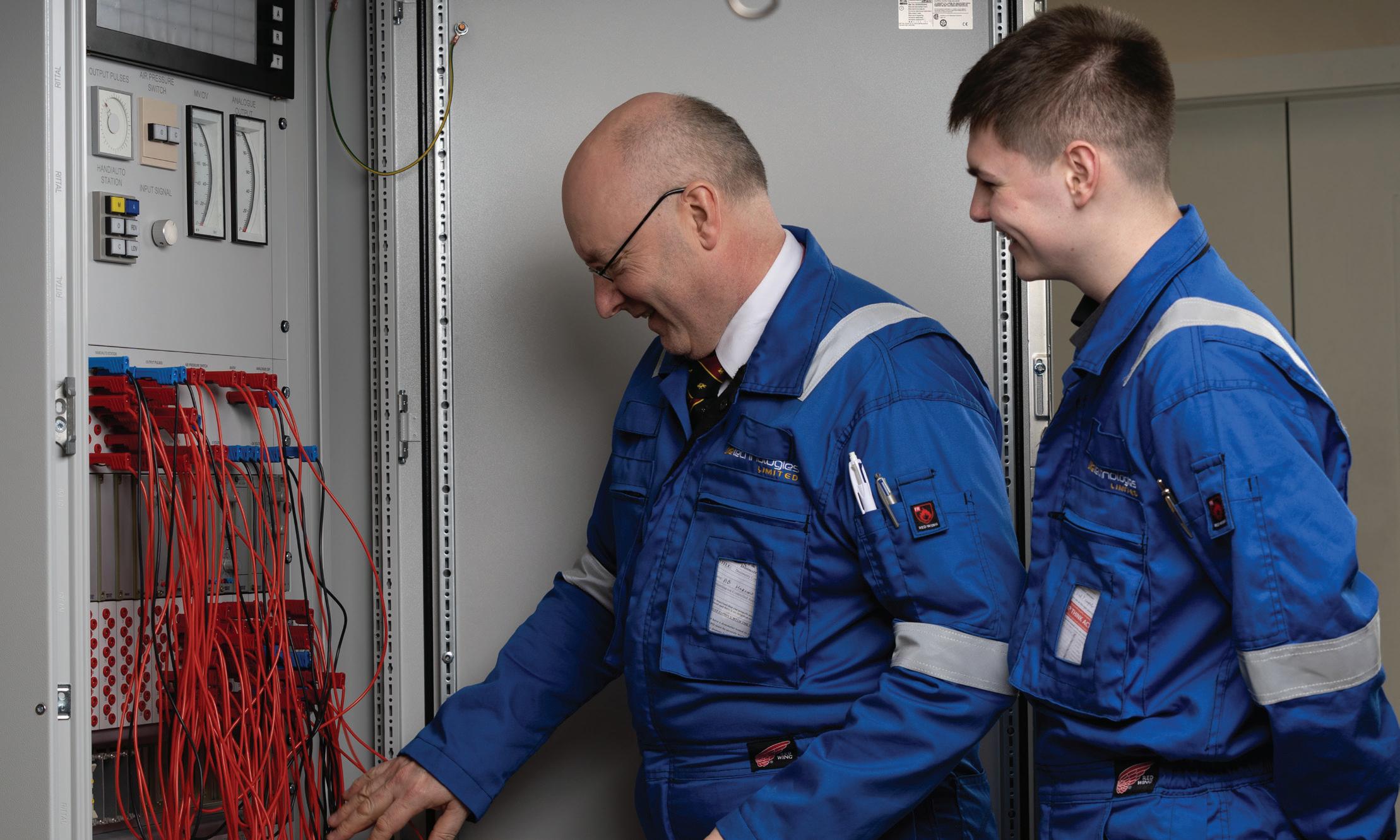

Applications to immobilise contamination within pipes, ducts, and voids prior to cutting and disposal.
Design & Development of bespoke solutions to improve safety and reduce cost when conducting nuclear decommissioning.





TWI Ltd has been working as the ESA Technology Broker for the UK to promote and support cross-sector activities between space and nonspace industry entities, bringing technologies from the space sector back to Earth for terrestrial applications, and vice versa.
This includes the ‘Prepare for Space’ initiative that provides companies with guidance and resources to adapt their products, services and technologies for space applications, enhancing their market readiness and competitiveness. By supporting the creation of proposals and business cases, the Technology Broker speeds up the contracting process, and enhances commercial viability, technical strength, and programme coherence.
When thinking of potential cross-sector technologies, there are obvious synergies between certain industries, such as space and aerospace, where the potential for technologies to cross between them seems relatively high. However, there are also some less-obvious cross-sector synergies, such as those between space and the nuclear and fusion industries. While there are differences between these sectors, there are also a great many similarities that open up the potential for spin in and spin out between them.
This cross-over between the nuclear and space sectors goes back to the origins of them both, with foundations dating back to World War Two (WWII), the beginning of the Cold War, and the nuclear arms race.
Both industries were accelerated by military spending and defence requirements following the dropping of the first atomic bomb on Hiroshima, Japan, on 6 August, 1945 and, with the end of WWII, geopolitical tensions between power blocs in the East and West led to a nuclear arms race and an advancing of missile technology. This developed into the Space Race between the Soviet Union and the United States (from 1955) and the launch of the first artificial satellite, Sputnik 1, by the Soviet Union in 1957.
The Space Race led to rapid advancements in space technology, having drawn from the ballistic missile-based nuclear arms race between the two nations following WWII. As the space sector began to develop, nuclear research was also adding additional areas of focus outside of
bomb technology, including naval propulsion and electricity generation.
Although both industry sectors had their origins in military/defence purposes, the following decades saw their remits grow to include civil and infrastructure purposes too.
For the space sector, this created communications, observation and navigational satellite technologies that have many terrestrial applications, including GPS systems used by vehicles and mobile devices. Meanwhile, from 1956, the main objective of the nuclear sector pivoted away from military applications and towards energy and the development of reliable nuclear power plants.
Despite the expanding of focus for both the nuclear and the space sectors, there remained competition between the East and West power blocs in both. This competition has increased in recent years with other nations outside of the traditional competitors developing their own space and nuclear industries.
The space and the nuclear sectors both tend to be supported by public sector investment, although both industries are also experiencing increased private sector interest. In space, this includes everything from high-profile businesses like SpaceX and Virgin Galactic to the 3,000 small businesses that deliver elements to the ESA space programme.
In the nuclear and fusion sectors, growth in private investment has seen over 35 private companies raise over $2.4 billion to explore fusion concepts. The private fusion industry has grown quickly with varying levels of technology, strategy, and funding, mirroring the growth of private entrepreneurialism in the space sector.


When it comes to culture, both sectors are driven by innovation tempered by safety. Space tends to look towards a collaborative learning environment among employees, without which many discoveries and scientific advances would not have been possible. The nuclear industry, by contrast, places emphasis on procedural safety and a rules-driven approach, which leaves less room for innovative risk-taking and experimentation than with the space sector.
For the nuclear industry, safety is a combination of preventing accidents and security, which stops intentional acts to harm a facility or steal nuclear materials. For space, safety leans towards communicating issues, testing, and learning from mistakes and successes.
The space and nuclear sectors share a number of technology needs, meaning solutions have the potential to cross from one industry to the other. These needs include having to cope with harsh environments, including extreme temperatures and the effects of thermal cycling. In addition, the nuclear industry needs to assess structural changes caused by fusion and the impact of magnetic fields, while the space sector has to account for atomic oxygen and the need for parts to be lightweight and, of course, safety issues are also paramount in both sectors.
Radiation is also an issue that both nuclear and space need to address, for space this means protecting from radiation coming in from outside, while nuclear works to contain the radiation inside to prevent it getting out.
These various needs have already led to a number of technology developments that have found applications in both nuclear and space, such as oxide dispersion strengthened alloys, advanced ceramics and composites, additive manufacturing, automation, and robotics. Whatever form they take, the technology advancements sought by both sectors are driven by shared industry trends and challenges.
Elsewhere, both sectors have been researching miniaturisation, with space aiming to reduce weight and optimise payloads to reduce costs, while nuclear looks to the development of Small Modular Reactors and microreactors that will allow power plants to be spread to different areas and aid grid adaptation. Such reactors could also cross over to space directly, where they could power bases on the Moon, while nuclear technology could also be used for space propulsion.
Achieving Net Zero goals and reducing emissions will also involve the space and nuclear industries. Nuclear energy has the potential to replace fossil fuels and reduce CO2 emissions, but the space sector has a part to play too, from satellites to monitor emissions to orbiting solar reflectors that redirect sunlight to solar farms on Earth, extending the day for solar energy production.
Space and nuclear also have a requirement to deal with waste and debris in a safe and clean manner. With more satellites being launched, there are challenges around space debris cluttering up Earth’s orbit, while the challenges around nuclear waste are well-known, including a need to decommission old assets.
A final issue faced by both sectors involves international challenges around supply chains, regulation, and resources. Import barriers and export controls have increased costs for parts that are not available locally, while international markets—particularly in the space sector—will require international regulation. In addition, the global challenge of cleaner energy and resources could see international tensions rise in what has been described as a ‘new Space Race.’
The ESA Technology Broker aims to help solve the challenges faced by the space sector while also providing potential new revenue streams for those aligned to terrestrial industries, including nuclear. If you are interested in applying, or just want to find out more about the ESA Technology Broker UK and how to access it, please email prepareforspace@esa-technology-broker.co.uk.

SIMON STUTTAFORD & LOUIS PLOWDEN-WARDLOW • CASTLETOWN LAW
In February 2025 the UK Government published a draft new National Policy Statement (EN-7), together with a new consultation and response to an earlier consultation in January 2024. This marks a pivotal step forward, outlining a fresh approach to nuclear generation beyond 2025 by the new UK Government. By way of reminder the current version of the applicable National Policy Statement (EN-6) was designated in 2011 and applied to UK Government proposed policy for nuclear projects up to the end of 2025. In the UK Government`s own words, EN-7 should:
● “provide for Small and Advanced Modular Reactors, as well as GW-scale nuclear infrastructure
● bring nuclear into line with other energy infrastructure and provide applicants with robust criteria for site selection
● remove deployment deadlines from the planning framework for new nuclear”
At the heart of the new National Policy Statement, EN-7, is a shift from the existing nuclear siting policy with specific nominated sites to a criteria-based approach, which goes back to the original Strategic Siting Assessment process in 2008. It is key to note that the criteria referred to in EN-7 is essentially the same as the EN-6 criteria and that EN-6 will continue to apply.
The EN-7 criteria focus on the essentials: population density, proximity to military sites, and the risks of flooding and coastal changes. Site selection also considers the distance from major hazard zones and accident-prone pipelines, as well as civil aircraft and spacecraft paths. Environmental stewardship is key, with strict attention to biodiversity, geological conservation, and the protection of landscapes, heritage sites, and areas of natural beauty. The site’s size must meet operational demands, and crucially it must have reliable access to cooling sources to ensure safe, efficient energy generation. EN-7 has also removed the time limit on deployment of new nuclear power stations and has shifted the onus to developers to demonstrate that they can meet the relevant criteria.
The current basis of this criteria goes back to the approach applied by what is sometimes referred to as the “Hansard demographic siting criteria” of 1989.1 That criteria can be described as
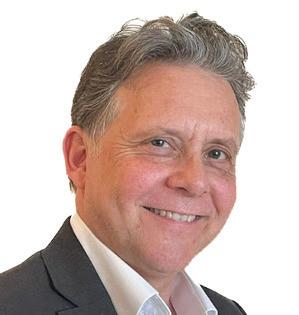
“a population density criteria and provides for both all around site and 30O sector criteria, which are written in terms of (i) population weighting factors, and (ii) weighted population constraint limits for remote (Magnox) and semi-urban (AGR) sites.” 2 In practice, the UK was also obliged to comply with international obligations—for example see Article 17 of the Convention on Nuclear Safety.3 That criteria was relaxed for later PWRs following both the Sizewell B Public Inquiry, which concluded in 1985, and the Hinkley Point C Public Inquiry in 1989. Updating also occurred to reflect the HSE’s Safety Assessment Principles in 2006. In terms of Siting Policy, the UK government set up a Strategic Siting Assessment in 2008 which aimed to identify sites in England and Wales that were potentially suitable to deploy new nuclear power stations by 2025. Ultimately that led to a list of nominated sites included in EN-6 in 2011.
The history of the development of the “semiurban criteria” can clearly be viewed in the prism of large GW Reactors—whether that be Magnox AGRs or more latterly PWRs—but does not reflect the development of SMRs and AMRs. It is also worth considering whether nuclear is being fairly treated in comparison to other risk industries which may be located closer to populations.
Indeed, in the first round consultation in January 2024 a sizeable 84% majority sought changes to the population density criterion, arguing that these criteria are not suitable for SMRs and AMRs given their obvious advantages in being able to provide energy and heat closer to populated areas.
In its second Consultation, the government states that there is not sufficient operational experience and further underpinning evidence to modify the criteria, while also emphasising the importance of keeping these criteria under regular review, highlighting a commitment to reassess them every five years to maintain their relevance and effectiveness.
The UK Government acknowledges that SMRs and AMRs have a major role to play in supplying low carbon energy both to the national electricity grid and also to high-demand local users including data centres and industrial clusters but despite that makes the point that “there is limited evidence available to demonstrate that novel nuclear fission technologies present a significantly different risk to existing nuclear fission technologies. There is also limited evidence to indicate that the Semi-Urban Population Density
Criterion will prevent the deployment of this technology in economically efficient locations.”
With its new criteria-based approach, EN-7 seeks to drive forward the development of sites previously highlighted in EN-6 that will still meet the relevant criteria, even though EN-6 is no longer the main National Policy Statement.
In practice, it seems clear that developers will have to make the case to demonstrate that any site outside of those mentioned in EN-6 must meet the same criteria. This includes the semi-urban criteria as they currently stand with no relaxation and in effect, that is going to be challenging, particularly when considering the wording: “there is limited evidence available to demonstrate that novel nuclear fission technologies present a significantly different risk to existing nuclear fission technologies.”
In other words, despite the warm words and apparent encouragement and support for Advanced Nuclear Technologies, without a different approach to Siting and a relaxation of the “semiurban” criteria, we are really looking at no change and, on the Government`s own assessment, we are unlikely to see any change for the next 5 years at least.
In conclusion, this is an opportunity missed to reassess the applicability of the “semiurban” criteria and bring them up to date while also developing a National Planning Policy that accommodates Advanced Nuclear Technologies and not only large GW. Inevitably SMR and AMR developers will be struggling to work out where they can deploy their new technologies in the UK other than on existing nominated sites. The Government appears to understand and welcome the enormous opportunities presented by Advanced Nuclear Technologies yet has not recognised any distinction in risk profile and application. As a result of this confusion, the UK is not setting itself up as the champion for Advanced Nuclear Technologies which is a great shame.
1 Although in practice the origins go back even further. See: Nuclear Safety Advisory Committee report (The Siting of Nuclear Installations in the United Kingdom) by Dr John Highton and Mr David Senior, HSE Nuclear Directorate, NII, dated 3 July 2008
2 IBID
3 https://www.iaea.org/sites/default/files/infcirc449.pdf
● Nuclear Safety Advisory Committee report (The Siting of Nuclear Installations in the United Kingdom) by Dr John Highton and Mr David Senior, HSE Nuclear Directorate, NII, dated 3 July 2008
● Convention on Nuclear Safety: https://www. iaea.org/sites/default/files/infcirc449.pdf
The government’s record investment for Sizewell C and RollsRoyce SMR was the biggest day for the industry in a very long time, reflected in the wall to wall press coverage across print, online, TV and radio.
The NIA’s Chief Executive Tom Greatrex appeared on the BBC’s Business Today programme to give his reaction to the Sizewell C news, which he described as “momentous” because it’s a project that will ensure a secure, reliable supply of clean energy, all the while creating thousands of jobs, growth and economic activity all across the country, not just in Suffolk and cutting our reliance on high carob fuels.
Tom Greatrex also appeared on BBC Five Live’s Wake up to Money and told the programme that for the “first time in a long time in the UK, we’re building a series of projects with Hinkley Point C and now Sizewell C, so the same technology, the same supply chain, a lot of the same workforce and getting the benefits of replication and repeat build which is how you get costs down and efficiencies up.”
Tom was pressed on the costs associated with nuclear so he highlighted that a new financing model—the RAB model—will be used for Sizewell C which is different to Hinkley Point C.
The fact that the announcements came the day before the spending review meant a clear run in the media, so that government ministers could take to the airways to speak on nuclear and nuclear only. Ministers like the Energy Secretary, Ed Miliband, who appeared on BBC Breakfast shortly after the news was announced and said it is “important for our long term energy security, for jobs—10,000 jobs being created, 1,500 apprentices will be trained—and important in tackling the climate crisis by getting us off expensive and volatile fossil fuels.”
The Energy Secretary also wrote an op-ed for The Telegraph, detailing how all this “taken together… represents a new golden age for nuclear—the biggest building programme in a generation. Once SMRs and Sizewell C come online this, along with Hinkley Point C, will deliver more new nuclear to grid than over the previous half century combined… We are choosing to go big on nuclear, as part of our Plan for Change to invest in Britain’s future, rather than accept the decline of recent times.”
On Channel 4 News, Dr Tim Gregory from the National Nuclear Laboratory, went up against an anti-Sizewell campaigner and made the point that “the reality of net zero by 2050 is that we’re going to have to build reactors in parallel, we can’t build them in series one after the other. We need to start building before the last one is finished.”
Rolls-Royce SMR’s CEO Chris Cholerton was overjoyed at the result of Great British Energy - Nuclear’s SMR competition and explained to the BBC’s David Waddell how the reactor will power a million homes for 60 years with 90% of the build taking place in factories where they can replicate the design and build in fleets across the UK and abroad.
The United Kingdom Atomic Energy Authority (UKAEA) welcomed British musician, comedian and television star, Bill Bailey, to its Culham Campus to explore the vital research being undertaken to advance fusion as a sustainable source of energy for future generations.
The Strictly Come Dancing Glitterball Trophy winner visited UKAEA’s campus in Oxfordshire, after mentioning fusion during his ‘Thoughtifier’ stand-up tour. Spotted in the audience, UKAEA’s Executive Director for Engineering and Computing, Dr Joe Milnes, invited Mr Bailey to see fusion’s research and development in action.
“The central premise of this show (‘Thoughtifier’) is celebrating human endeavour and the constant ingenuity of humans. I talk about it in terms of human evolution, about discovering music, and one of those fields is also fusion. It felt like a natural fit to put fusion into the show and to ask the members of the audience what they feel about it.
“I’ve noticed a change over the past year and half where, every time I mention fusion, there has been a gradual uptick in people’s awareness
of it. When I say, “We need to find a solution to the world’s energy needs, what about fusion?”, there are cheers from the crowd.
“My visit to UKAEA was fascinating and eyeopening, and amazing to hear about how our understanding of fusion is progressing. Seeing all this being done in the English countryside gave me a huge surge of patriotic pride, and enormous hope for the future.”
Bill Bailey
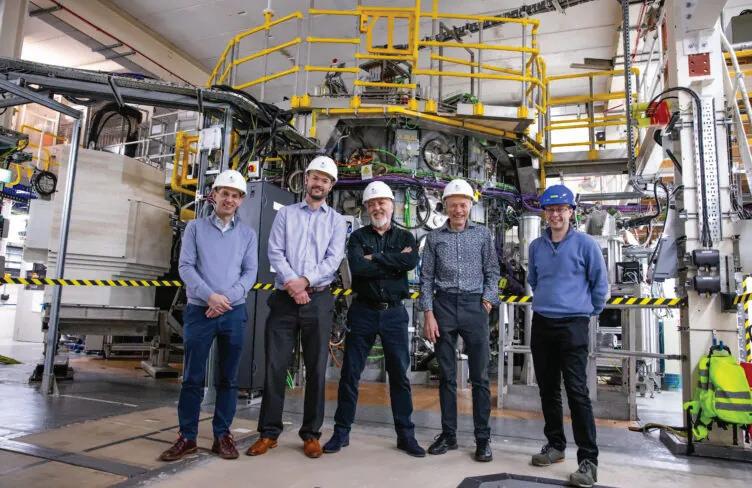
Bodycote study reveals energy-efficiency of PM-HIP process
Bodycote, the world’s largest thermal processing services provider, has studied the energy use of near-net-shape Powder Metallurgy Hot Isostatic Pressing (PM-HIP) versus Hot Forging for industrial metallic components, revealing PM-HIP to be significantly more energy efficient, whilst supporting cost, quality, and lead-time drivers.
The study focused on the energy use in the manufacturing stages of each process, a crucial topic as industries aim for sustainable production without compromising quality or timelines. This is particularly relevant to new power and energy facility construction, where the energy efficiency and carbon intensity of components are used to evaluate the net benefits of energy supply and minimise carbon related costs.
The hypothesis was that producing mediumsized metallic components via PM-HIP uses less energy than hot forging, tested through a series of steps, concluding with a theoretical calculation of total energy use. Results showed hot forging used 15.1 MWh, while PM-HIP used just 5.3 MWh, a 65% reduction; enough
to power an average home for a year. Key factors included a 60% weight reduction in the optimised PM-HIP design, consolidated postprocess heat treatment, reduced machining, and no overlay welding, which also reduces risk and lead time.
While the study demonstrates that it is possible to have environmental benefits alongside potential cost and lead-time reductions while maintaining quality, Bodycote acknowledges variables exist and recommends further research on supporting processes and carbon intensity analysis.
Bodycote’s PM-HIP Powdermet® technology offers freedom of design and superior material properties, transforming primitive forged shapes into sleeker, lighter designs with homogenous material properties and leaner manufacturing processes. This enables customers to produce improved products while reducing costs and lead times.
Further information about the study can be found at www.bodycote.com/energy-efficiencyin-manufacturing
The NIA’s Millie Beaver and Iolo James will be cycling 250 miles, from London to Paris, to raise money for the Brainwave charity.
It’s a fantastic cause that helps children with disabilities achieve greater independence by improving mobility, communication skills, and learning potential through a range of specialist therapies.
Brainwave believes in a world where every child with disabilities reaches their potential. Their multidisciplinary team of therapists take the time to fully assess each individual child and their family’s needs in the relaxed, fun and friendly atmosphere of their fully equipped Brainwave Centres. They develop a structured and bespoke Therapy Programme which fits in with family life and helps children achieve greater independence. If you’d like to show your support for this mammoth task and worthy cause you can make a donation at www.justgiving.com/page/millieandiolo

In partnership with the University of Bristol, Astral Systems has become the first commercial fusion company to breed tritium using their own fusion reactor.
This breakthrough helps address one of the biggest concerns within the fusion power industry— ensuring a healthy supply of fusion fuel—and charts a course toward solving the grand engineering challenge of breeding more tritium than is consumed by a fusion reactor.
Through an ongoing partnership with the University of Bristol and Dr. Hugo Dominguez-Andrade, the team successfully produced and detected, in realtime, the production of Tritium from an experimental Lithium breeder blanket using their multi-state fusion reactors. This success was achieved during a 55-hour DD fusion irradiation campaign run over a full week in March.
This project was supported by the UK Atomic Energy Authority through the Fusion Industry Programme. The Fusion Industry Programme is stimulating the growth of the UK fusion ecosystem and preparing it for the future global fusion powerplant market.
Astral is inviting other organisations to submit briefs to participate in neutron irradiation experiments enabled by their Multi-State Fusion DD reactors later on this year. To apply visit https://bit.ly/astral_neutron_irradiation.
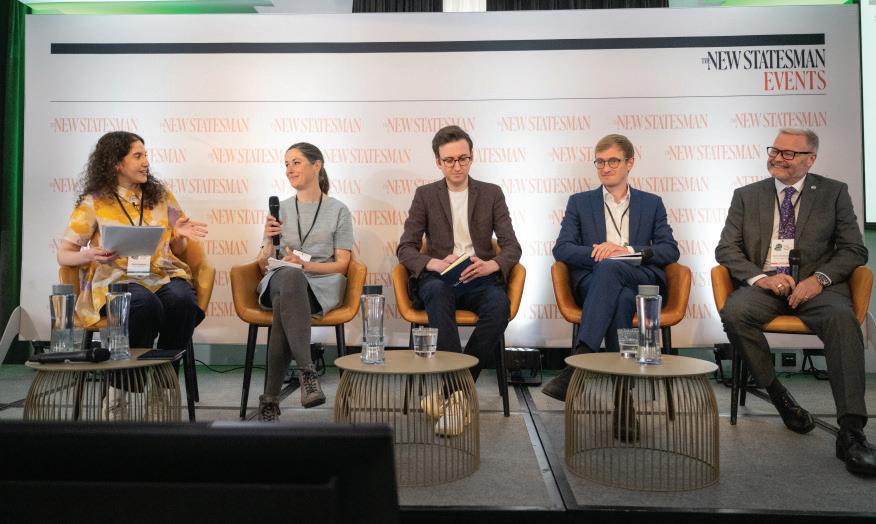
The 2025 New Statesman’s Energy and Climate Change Conference in April brought senior politicians and key nuclear sector leaders together to share their views on the UK’s energy systems, and the implications for the future of the UK economy. T opics debated included energy security, the role of innovation and technology in the clean energy transition and how we can create green jobs and deliver vital economic growth. How the UK can be an international leader in effectively managing radioactive waste was on the agenda.
NWS’ vision to make the UK’s nuclear waste permanently safe, sooner featured on a panel session. Discussions focused on managing waste efficiently, re-using and recycling waste where possible. This work has saved nearly £900m over the past decade. Panellists also discussed the progress being made delivering a Geological Disposal Facility for the UK’s most radioactive waste, with site evaluations underway and communities engaged in the process.
The panel session included Martin Walkingshaw from Nuclear Waste Services, Ieuan Williams from Great British Nuclear, Libby Peake from Green Alliance and Elliot Chapman-Jones from Liberals and Democrats for Nature and Climate.
The debate covered topics around how sustainable growth in the UK will involve cutting waste and emissions, while more effectively managing those that are produced. How can we make the vision of a clean energy future a reality?
Jobs and skills was a key topic favoured for discussion at the event, especially in the circular economy sector. Panellists shone a light on the benefits waste management facilities already bring to local economies and the transformative opportunities that a GDF could bring a community through the jobs and skills, and investment.
NWS is part of the NDA group, which has a mission to safely, securely and sustainably decommission the UK’s oldest nuclear sites, leaving them ready for their next use. NWS works alongside NDA group operating companies, Sellafield Ltd and Nuclear Restoration Services, to safely manage radioactive waste already created to enable the UK Government’s net zero ambition by preparing to provide a permanent solution for the most hazardous future radioactive waste.
Decommissioning the UK’s nuclear legacy is a complex undertaking and relies on the full range of expertise and skills within the NDA group. The NDA group brings together the best of the UK’s expertise in nuclear decommissioning and radioactive waste management.

RADIANT ENERGY & EDUCATION radiantenergy.uk
Radiant provides specialist training and learning consultancy for the nuclear sector, and can also deliver specialist training directly. We offer our clients the assurance that their people are learning and being trained in a creative, compliant, and sustainable manner.

ALPHA ENGINEERING alphaltd.org
Alpha Engineering provides cradle to grave support from design to commissioning of mechanical and EC&I aspects of containment ventilation and building services, whilst additionally undertaking standalone EC&I packages associated with mechanical and process plant as a whole.
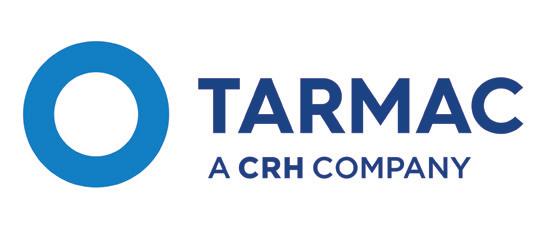
TARMAC tarmac.com
Tarmac is the UK’s leading sustainable building materials and construction solutions business. With 150 years of experience and heritage to our name, we’re a national network of local businesses, combining the knowledge and expertise of two of the construction industry’s most iconic brands: Tarmac and Blue Circle.
Not a member? To find out about the NIA and benefits of membership scan the QR code. To discuss membership options available to your company email membership@niauk.org

R&M ELECTRICAL GROUP rm-electrical.com
We deliver electrical products and solutions to a global customer base across multiple market sectors, including nuclear. We aim to provide best-in-class customer service, coupled with market-leading technical support, from our large team of industry and subject matter experts.

CLARKE CHAPMAN clarkechapman.co.uk
Clarke Chapman is a respected supplier to the nuclear industry having been actively involved in the design, development, manufacture and supply of associated special purpose high integrity cranes and materials handling equipment into the sector for over 40 years.

MERRICK merrick.com
Every challenge requires a unique solution. Merrick works with you to find engineering, architecture, surveying, and geospatial solutions that fit your needs. Whether that’s finding the most cost-effective alternative, using an innovative approach, or choosing the triedand-true solution.

EVOLUTION SAFETY SOLUTIONS evolutionsafetysolutions.co.uk
A specialist consultancy offering comprehensive health, safety, environmental, and fire compliance services tailored for the nuclear industry. With over 50 years of combined expertise, we support nuclear decommissioning, new build, and operational safety projects.

EMPOWER ADVISORY bmdgroup.global
Empower Advisory UK is a leading infrastructure business in the United Kingdom driving the delivery of smart solutions with the global perspective and expertise of Australia’s largest privately owned civil contractor.

CAMARGUE camargue.uk
We help businesses communicate effectively. We have a reputation for excellent strategic advice, value adding creative campaigns and high impact delivery. We work closely with our clients to support their growth journey, communicating complex propositions with clarity through campaigns that get attention.

COPPER CONSULTANCY copperconsultancy.com
Copper is a strategic communications and stakeholder engagement consultancy helping shape the future of the UK’s nuclear sector. It has over 25 years’ experience delivering highimpact national campaigns.

FOOT ANSTEY LLP footanstey.com
Foot Anstey is an award winning, multi-disciplinary top 100 law firm. Our advisers take an active role in a range of sectors and industries. We offer you business and personal solutions, built on our deep understanding of the issues and challenges in your world.

PREFORMED WINDINGS preformedwindings.com
Preformed Windings delivers over 50 years of coil and bar manufacturing excellence to the nuclear sector— engineered with precision, driven by safety, and obsessed with quality.

HONEYWELL FEDERAL SOLUTIONS aerospace.honeywell.com
Honeywell is a globally recognised integrated operating company serving diverse industries and geographies worldwide. Honeywell Accelerator and Connected Enterprise platforms deliver innovative solutions across aerospace technologies, industrial automation, building automation, and energy and sustainability.
In March 2025 the NIA shared with its members a survey to allow us to gather feedback on activities you are most engaged with and what areas the NIA should be improving and developing further.
The majority of members responded with the main motivations for membership being networking and business development/ commercial opportunities followed by Industry intelligence and technical information and then a desire to support the NIA in representing industry to government and stakeholders. Thank you to those who responded, we have listened, and we are delivering. If you have any other suggestions, please get in touch membership@niauk.org
In early April, a group from the UK Young Generation Network (YGN), comprising of 20 young nuclear professionals representing 17 different UK organisations, embarked on a week-long tour exploring Finland’s nuclear sector.

The tour provided a valuable opportunity for the British delegation to connect with and learn from Finland—one of the world’s foremost nuclear nations—and together explore how shared lessons and best practices could shape the future of civil nuclear programmes in both countries. The agenda featured a comprehensive technical seminar day, visits to nuclear sites of interest, and cultural excursions, all providing networking opportunities aimed at fostering collaboration between the two nations and their young nuclear professionals.
Kicking off with a day of technical seminars, the YGN brought together 37 delegates from the UK and Finland with the aim of sharing common progress, exchanging perspectives, and inspiring further partnership. Promotional presentations from platinum sponsor Accenture, and gold sponsors Rolls-Royce SMR and Westinghouse, were followed by my presentation on the YGN’s missions and future activities. This was followed by an update from our Finnish counterparts at the ATS Young Generation—the younger branch of the Finnish Nuclear Society.
The audience had the opportunity to hear from Fortum, a major Finnish energy company with operations across Scandinavia, which helped contextualise Finland’s nuclear footprint. This was followed by an informative session with STUK, the Finnish nuclear regulator, who discussed the current regulatory environment in Finland and the ongoing and upcoming legal reforms. Accenture provided an insightful, forward-looking view of Finland’s energy market and investment landscape, and an interactive session organised by the YGN encouraged attendees to debate key topics around European Pressurised Reactors (EPR), geological disposal, and Small Modular Reactors.
A standout session was a remote talk delivered by Marc McBride, Principal Inspector from the

Office of Nuclear Regulations, who shared reflections on safety culture, regulatory evolution, and updates on the UK’s EPR and Geological Disposal Facility programmes. The seminar day concluded with a presentation from VTT, presenting Finland’s national research centre, whose work bridges public research and private sector innovation.
That evening, delegates were honoured to be invited to the British Embassy in Helsinki for a reception held at the official residence of His Majesty’s Ambassador to Finland, Laura Davies. Ambassador Davies, joined by the Embassy’s Science, Innovation and Technology Officer and Senior Trade Advisor, spoke about the recently signed UK–Finland Memorandum of Understanding (MoU) on nuclear collaboration—a fitting context for our visit. It underscored the importance of our mission: this wasn’t just a technical exchange, but a moment of genuine diplomatic alignment.
The objective of this MoU is to establish a bilateral framework for collaboration between the participants concerning nuclear energy projects, programmes, research and development, and policies. The UK and Finland have made long-term investments in civil nuclear energy and recognise the strategic role civil nuclear energy plays in driving energy security, affordability, and in achieving net zero goals, as well as in the decarbonisation and electrification of key industries.
The technical highlight of the week came with a site visit to Olkiluoto Island, which is almost entirely owned by energy companies TVO and Posiva. This island is home to one of Finland’s two nuclear facilities, Olkiluoto Units I and II (Boiling Water Reactors that began operations in 1978 and 1980 respectively), as well as the recently operational Unit III—an EPR that was connected to the grid in 2023. Olkiluoto III is of particular significance to UK
“ORGANISING THIS TRIP TO FINLAND WAS A VERY REWARDING EXPERIENCE. IT BROUGHT TOGETHER UK AND FINNISH NUCLEAR PROFESSIONALS TO SHARE KNOWLEDGE, EXPLORE DIFFERENT APPROACHES, AND BUILD MEANINGFUL CONNECTIONS. I’M GRATEFUL TO ALL THOSE INVOLVED FOR THEIR ENGAGEMENT AND HOSPITALITY. THE WEEK RAN SMOOTHLY, WITH INSIGHTFUL VISITS, THOUGHTFUL DISCUSSIONS, AND GENUINE COLLABORATION. IT WAS A PLEASURE TO TAKE PART, AND I HOPE THE RELATIONSHIPS FORMED WILL LEAD TO CONTINUED DIALOGUE AND FUTURE COOPERATION.”.”
Sean Brown ,
Safety
& Risk Consultant and Delivery Manager, Assystem
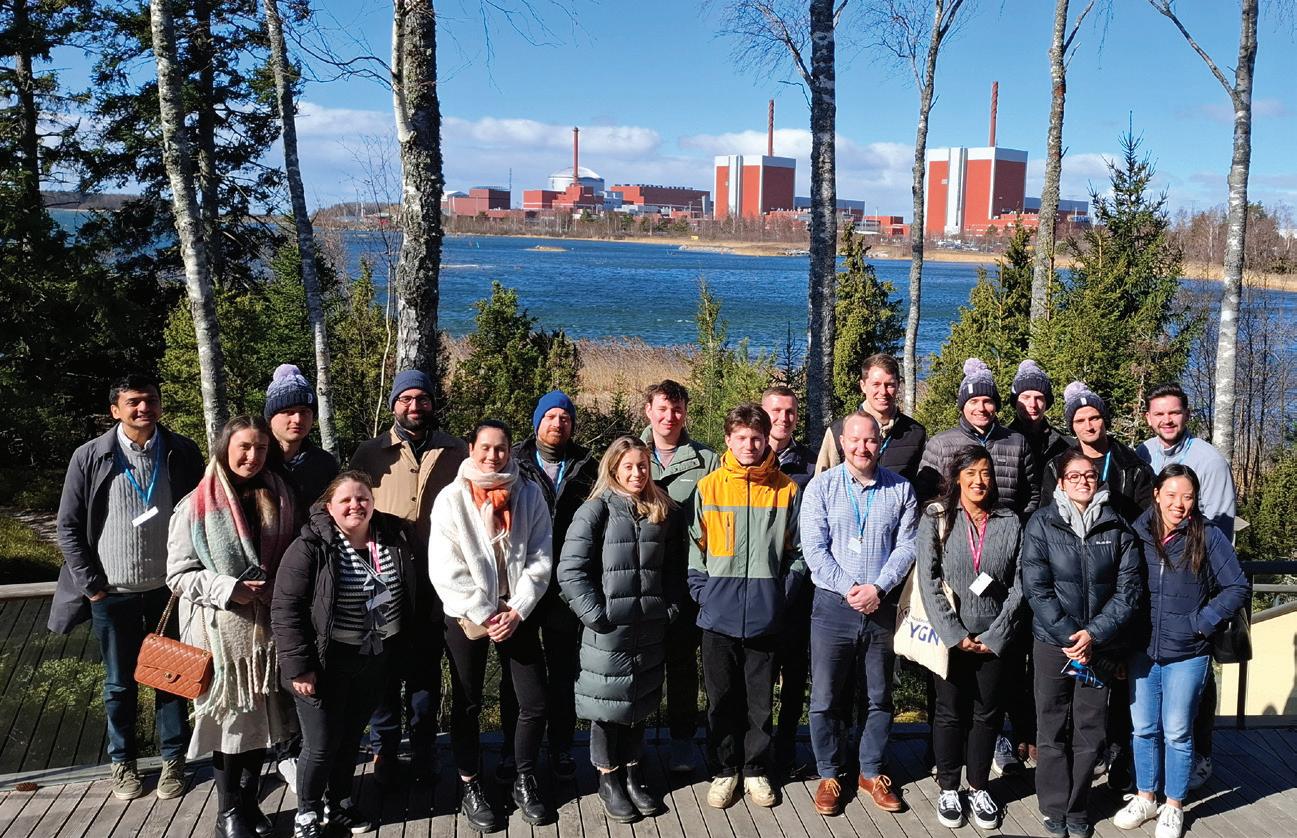
representatives, as it utilises the same EPR design as Hinkley Point C and Sizewell C.
Hosts TVO provided an overview of the site’s history, reactor fleet, and the groundbreaking ONKALO project—the world’s most advanced geological disposal facility for high-level waste, which is currently in the commissioning phase. The YGN was accompanied by the Olkiluoto Young Generation Society, which discussed their initiatives to support young professionals at the site. A bus tour took delegates closer to the reactors and ONKALO surface facilities, providing a real sense of scale and integration. But the most memorable experience was the rare honour of entering the intermediate and low-level waste repository, descending 40 metres underground to view the tops of the storage silos—a powerful and awe-inspiring moment.
The last stop was back at the visitor centre to see the ‘Electricity from Uranium’ exhibition, one of the most comprehensive exhibits globally on the nuclear fuel cycle, from uranium mining to final disposal of the nuclear waste.
Of course, what trip to Finland would be complete without the opportunity to immerse yourself in Finnish culture. YGN delegates took a historical and cultural walking tour of Helsinki, learning about the city’s evolution and Finland’s journey from being influenced by powerful empires to its current standing as a progressive, high-tech nation. They also visited Suomenlinna, Helsinki’s iconic sea fortress and a UNESCO World Heritage Site. The island’s role as a cultural and military crossroads gave context to Finland’s values of resilience, innovation, and long-term planning— traits reflected in its nuclear programme today.
Accompanied by their Finnish colleagues, the meals and conversations they had in an informal setting were an essential part of the

whole programme. All contributed to a richer understanding of Finnish life and allowed delegates to build professional relationships on a foundation of cultural respect and shared experience. Reflecting on the experience, it was clear that this event was far more than a technical tour; it was the start of lasting professional relationships and invaluable international collaboration between the United Kingdom and Finland. The YGN would like to express our gratitude to our sponsors Accenture, Rolls-Royce SMR and Westinghouse for making this visit possible, and to thank all who attended for making this event one to remember. We would like to give special recognition to Victoria Chan, the YGN Marketing and Communications Lead, for her impeccable efforts in producing and delivering the marketing materials for the YGN’s social media channels.
From the start of organising this initiative, I recognised the significant potential and the opportunities presented to our British and Finnish colleagues. In the light of the current global interest in advancing new nuclear technologies, fostering dialogue between the UK and our European partners is essential. I am happy to confirm that there is a robust foundation at youth level for this engagement which I am grateful to continuously develop. We have extended an invitation to our Finnish colleagues to visit the UK, allowing further collaboration and to highlight the rich nuclear and cultural heritage of our two nations.
Finland’s advanced approach to nuclear regulation, waste management, and reactor deployment offered vital insights for the UK, as they advance their civil nuclear ambitions. The bonds formed between peers from the two countries—both professional and personal—will help ensure that progress continues, fuelled by a shared knowledge, mutual respect, and a common commitment to a cleaner energy future.
